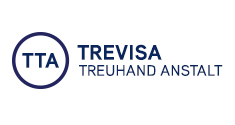The trust first entered Liechtenstein legislation in 1923. At the time, the Common Law concept of a trust was used as a guideline and was adopted to complement the rights for legal entities and organisational forms in personal and corporate law. The trust is not a legal entity but rather a special long-term contractual and fiduciary relationship. A trustor designates assets to a very specific purpose and transfers them to a trustee. The purpose is explained extensively and in detail in what is known as a trust deed. The trustees hold and manage the assets similarly to the way board members do for a foundation. This contractual relationship is called a trust. The trust is given an individual name so that it could be called 'Jones Trust', for example.
Trusts are popular in Anglo-Saxon countries such as the USA and the United Kingdom.
Thanks to the Hague Trust Convention, the trust is explicitly recognised in a large number of countries. Similarly to a foundation, it offers the opportunity to keep a family's assets secure throughout generations, to provide guidelines for the preservation and corresponding use of the assets and is therefore a particularly suitable instrument for the preservation and continuation of business ventures.



